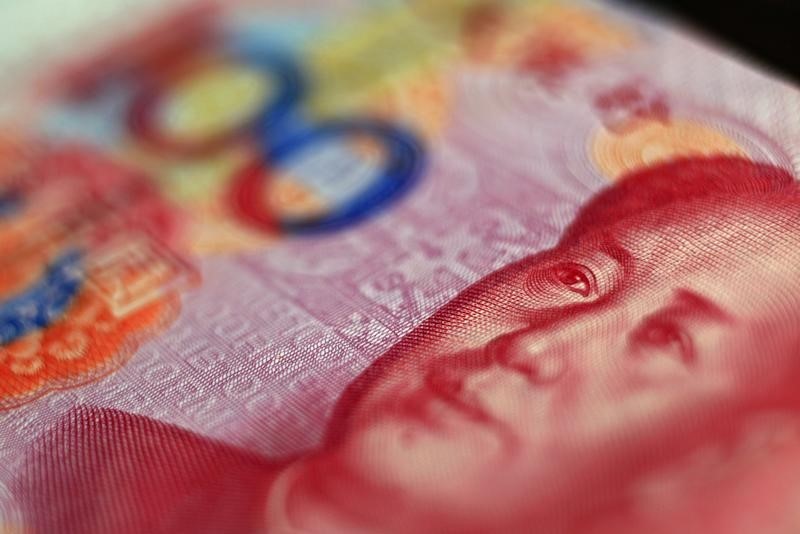By Ambar Warrick
Investing.com-- China’s yuan sank further below key levels on Monday after more monetary easing in the country, while broader Asian currencies tumbled in anticipation of a Federal Reserve meeting later this week.
The yuan fell 0.4% to an over two-year low of 7.0080 to the dollar, its second day spent in breach of the psychologically important 7 level. The drop came despite an extremely hawkish midpoint fix by the central bank.
The People’s Bank of China cut a repo rate on Monday, and also increased cash injections into the economy as it sought to boost growth that was severely dented by COVID-related lockdowns.
The central bank is now struggling to strike a balance between supporting economic growth and stemming further losses in the yuan. A series of strong midpoint fixes by the bank suggest that it is unwilling to let the currency drop any further.
China’s prospects may improve in the near-term, after the lifting of a two-week COVID lockdown in the megacity Chengdu. Still, the economy has a long road to reach pre-COVID highs.
Broader Asian currencies sank on Monday, while the dollar index and futures rose around 0.1% each.
The South Korean won fell 0.4%, while the Malaysian ringgit was the worst performer in Southeast Asia with a 0.3% decline. The Japanese yen fell 0.2%, although a market holiday in the country kept trading volumes slim.
The Fed is widely expected to raise interest rates by 75 basis points bps on Wednesday. Traders are also pricing in the possibility of a 100 bps hike, after hotter-than-expected U.S. inflation data last week.
“High inflation means 100bp is a risk, but inflation expectations and corporate price plans look less threatening, and the growth outlook is more uncertain, so we don’t see it. Still, a more hawkish message surrounding sticky inflation will see the Fed dots closer reflect the market pricing of a 4.25-4.5% terminal rate,” ING analysts wrote in a note.
In the Asia Pacific region, the New Zealand dollar sank 0.5% to an over two-year low. Reserve Bank Governor Adrian Orr said the bank plans to include climate change risks in how it manages monetary policy.
